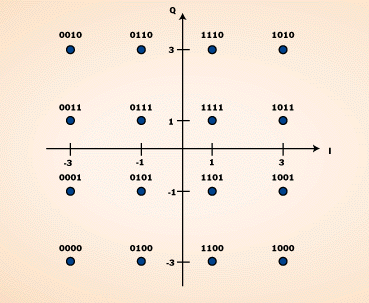Lou Frenzel
Microwaves & RF
Image courtesy of Thinkstock.
 It’s not every day that a new modulation method comes along. All of the basic modulation schemes have been known for over a century and even the newer ones are many decades old. So a new method is sort of a big deal. Recently a new method was announced by Israeli company MagnaCom. Called WAM for wave modulation, it is designed to be a significantly improved version of QAM with OFDM. Considering how widely used QAM and OFDM are, this could be a major positive change to communications equipment.
It’s not every day that a new modulation method comes along. All of the basic modulation schemes have been known for over a century and even the newer ones are many decades old. So a new method is sort of a big deal. Recently a new method was announced by Israeli company MagnaCom. Called WAM for wave modulation, it is designed to be a significantly improved version of QAM with OFDM. Considering how widely used QAM and OFDM are, this could be a major positive change to communications equipment.
 |
| Фото Thinkstock. |
When you stop and think about it, most of the newer higher-speed communications systems, both wired and wireless, use OFDM and QAM. Cable TV (DOCSIS) and DSL (discrete multitone) use this form of modulation. So does Wi-Fi, as well as 4G LTE cellular. And there are others like WiMAX and most power-line communications (PLC) techniques. The combination of OFDM and QAM is so popular because it is the most spectrally efficient of all known methods, since it delivers the highest possible data rates in the least amount of spectrum. Now MagnaCom claims that its WAM can improve on that.
WAM is a pure digital technique, a set of algorithms that implement a form of spectral compression. It fits into the signal processing path after the FEC, but before the digital front-end of the radio. It can replace QAM completely or work in parallel with it if both QAM and WAM are desired as options. A key benefit is that WAM does not require any changes to the analog part of the radio. All the I and Q modulators, mixers, and demodulators remain the same.
 Some of the benefits claimed for WAM are an overall 10% system gain advantage, up to 400% increase in range, a 50% spectrum savings, improved noise tolerance, and increase in data speed – not to mention a potential lower cost and faster design. One key benefit is the ability of the system to work with non-linear (such as class C) power amplifiers (PAs), unlike the costly and inefficient linear PAs that have to be used with OFDM and QAM. That can lead to a power savings of up to 50%. All of these advantages are not just incremental improvements, but significant leaps in performance.
Some of the benefits claimed for WAM are an overall 10% system gain advantage, up to 400% increase in range, a 50% spectrum savings, improved noise tolerance, and increase in data speed – not to mention a potential lower cost and faster design. One key benefit is the ability of the system to work with non-linear (such as class C) power amplifiers (PAs), unlike the costly and inefficient linear PAs that have to be used with OFDM and QAM. That can lead to a power savings of up to 50%. All of these advantages are not just incremental improvements, but significant leaps in performance.
WAM is delivered in the form of an algorithm and its related code. It can be used in a DSP, but is probably more efficient as dedicated logic in an FPGA or ASIC. WAM is patented by MagnaCom, but a license is available as are reference designs.
Getting any new modulation method adopted is a major effort, but WAM may just have the benefits that 5G needs to help wireless systems leap forward significantly in the coming years. Best wishes to MagnaCom in their efforts to bring about major improvements.